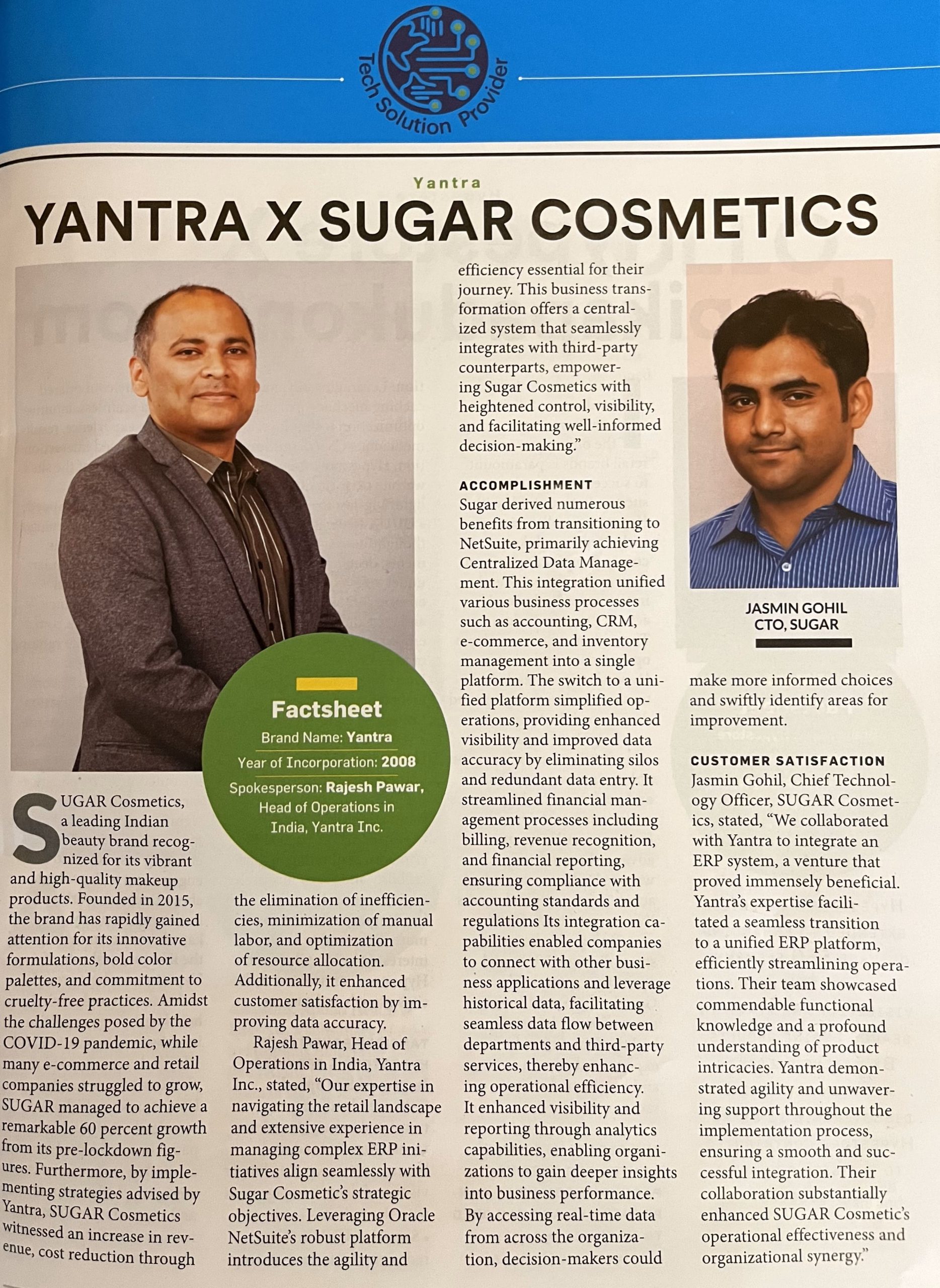Yantra Inc.’s Business Transformation Consultant expertise is in the process of analysis and designing of data-driven business transformation to improve efficiency, effectiveness, and adaptability. We use a comprehensive and strategic approach to help organizations improve their performance, achieve their goals, and adapt to changing business environments by leveraging our technology and management consulting practices. The goal of a Business Transformation consultant is to increase productivity, reduce costs, and improve overall business performance. Here’s how it typically works and what it means:
- Assessment and
Analysis:
Yantra begins by conducting a thorough assessment of the client’s current business processes, technology systems, organizational structure, and overall performance. - Strategy Development:
Based on the assessment, we collaborate with the client to develop a clear and actionable transformation strategy. And establish a thought-through data-driven business transformation process. - Technology Integration:
Technology plays a crucial role in business transformation consultancy. Yantra recommends and implements cutting-edge technologies such as cloud computing, data analytics supporting data-driven business transformation, artificial intelligence, and automation to enhance efficiency and competitiveness. - Process Optimization:
Business processes are often re-engineered to eliminate inefficiencies, reduce costs, and improve customer experiences. Yantra uses methodologies like Lean Six Sigma to streamline processes and make them more agile and responsive to market changes. - Change Management:
Yantra helps the client manage resistance to change, communicate effectively with employees, and ensure a smooth transition. Training and development programs may be implemented to upskill the workforce to adapt to new technologies and processes. - Performance Monitoring:
Key performance indicators (KPIs) are established to measure the success of the transformation initiative. Continuous monitoring and evaluation of progress, making adjustments as needed to ensure the client is on track to achieve its goals. - Sustainability and
Growth:
Successful business transformation not only addresses immediate challenges but also positions the organization for sustainable growth in the long term. Yantra provides ongoing support and guidance to help the client adapt to evolving market conditions and maintain a competitive edge. - Collaboration:
Throughout the transformation process, there is a close collaboration between Yantra and the client’s leadership and employees. Regular communication and feedback loops ensure that the transformation remains aligned with the client’s vision and objectives.
Business transformation consultancy is a strategic initiative aimed at helping organizations thrive in an ever-changing business landscape. Business transformation consultants typically include process mapping, process re-engineering, and process improvement techniques. We design and implement scalable business processes for our clients, with business capability mapping- a strategic planning tool used to understand, document, and visualize client’s core business capabilities.
What is business capability mapping?
It is a high-level, abstract representation of what an organization does, and it encompasses the people, processes, technology, and resources required to perform a specific function or achieve a particular outcome. Business capability mapping provides a structured way to analyze and align an organization’s capabilities with its strategic objectives. Here’s a more detailed explanation of business capability mapping:
- Identification of Capabilities: The first step in business capability mapping is identifying and defining the core capabilities that are essential for the organization to achieve its goals.
- Documentation: Each identified capability is documented in detail. This documentation includes information about the processes, skills, technologies, data, and resources associated with that capability.
- Visualization: Business capability maps are typically represented visually through diagrams or charts. These maps provide a high-level view of the organization’s capabilities and their relationships. They often resemble a hierarchical structure, with higher-level capabilities broken down into sub-capabilities.
- Strategic Alignment: Once the capabilities are mapped, organizations can assess how well their current capabilities align with their strategic goals and objectives. This helps identify capability gaps or areas where improvements are needed to support the organization’s strategy.
- Decision Support: Business capability mapping serves as a valuable tool for decision-making. It helps leaders prioritize investments, allocate resources, and make informed choices about where to focus efforts for maximum impact. It also aids in planning for business continuity and risk management.
- Resource Allocation: By understanding the capabilities required for strategic success, organizations can allocate resources more effectively. This includes decisions related to budgeting, staffing, technology investments, and process improvements.
- Change Management: Business capability mapping is useful for change management initiatives, such as business process reengineering or technology implementations. It helps stakeholders understand the impact of changes on the organization’s capabilities and how they contribute to achieving strategic objectives.
- Continuous Improvement: Capabilities are not static; they evolve over time. Business capability mapping facilitates ongoing monitoring and continuous improvement efforts. Organizations can track the maturity and performance of each capability and make adjustments as needed to stay competitive.
If we summarise, business capability mapping is a strategic framework that provides a holistic view of an organization’s capabilities and how they relate to its strategic objectives. With a goal to enhance the organization’s competitiveness, efficiency, and ability to meet customer needs while positioning it for long-term success.


